VIIRS views Severe Clear over the Great Lakes
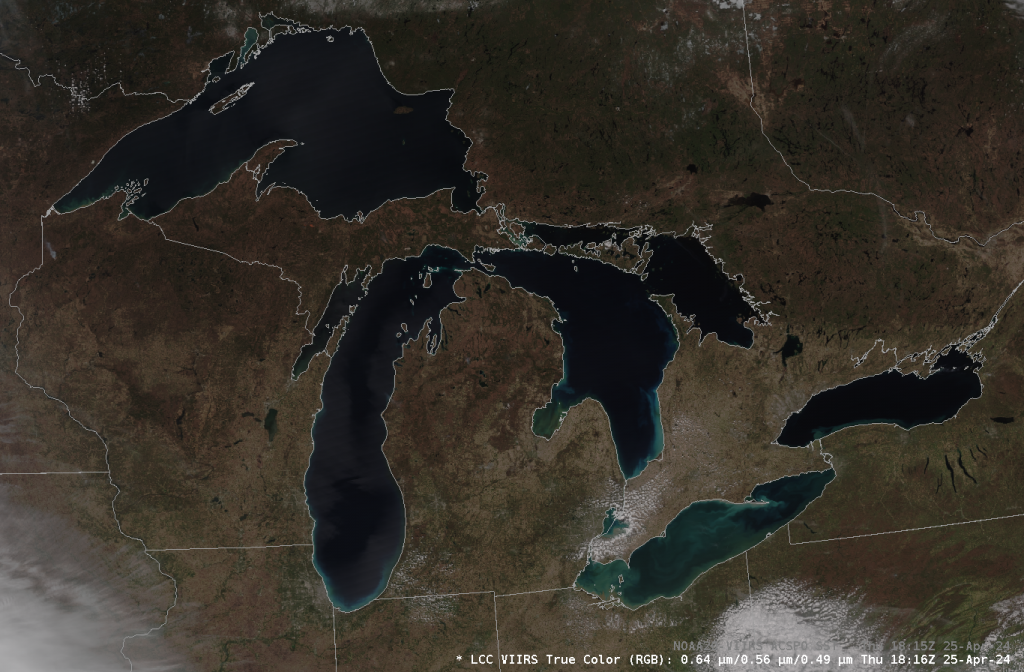
High Pressure over the Great Lakes on 25 April meant a spectacular true-color view of the 5 Great Lakes (apologies to Lake Champlain) by the VIIRS instruments on NOAA-20. A similar view was recorded at 1755 UTC by Suomi-NPP, shown below.
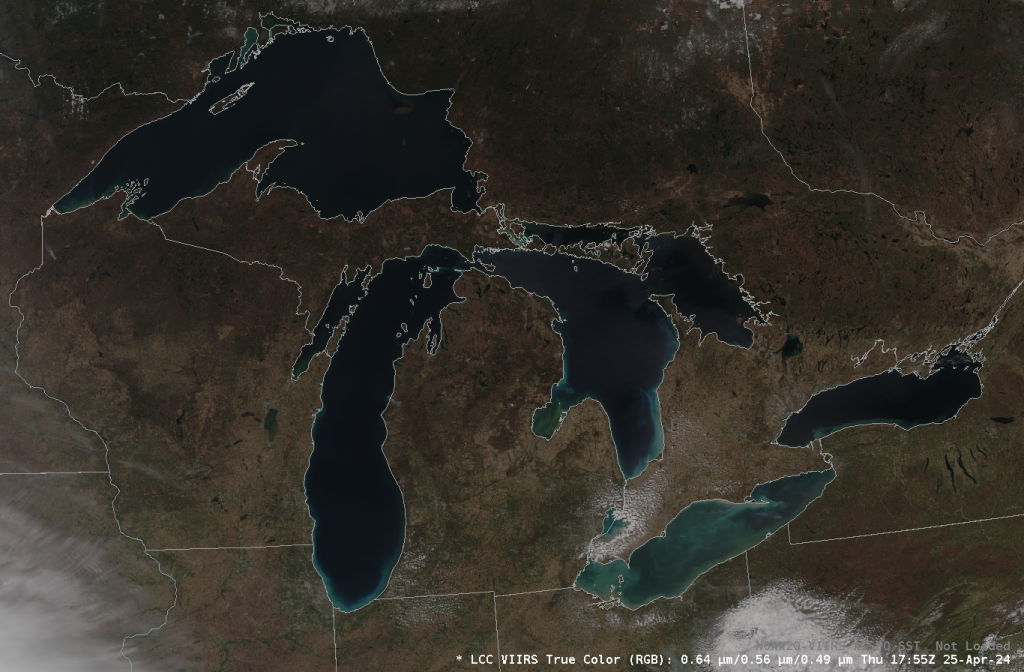
Clear skies also meant a determination of Lake Surface Temperatures, shown below (compare these to Monday, although note the scale here is 32 to 59oF v. 32 to 50oF on Monday). Relatively cool waters persist in eastern Lake Erie, Lake Superior is uniformly cold (37 to 38oF), and a curious warm ring has developed over southern Lake Michigan, 10oF warmer at its center than the surrounding lake waters!
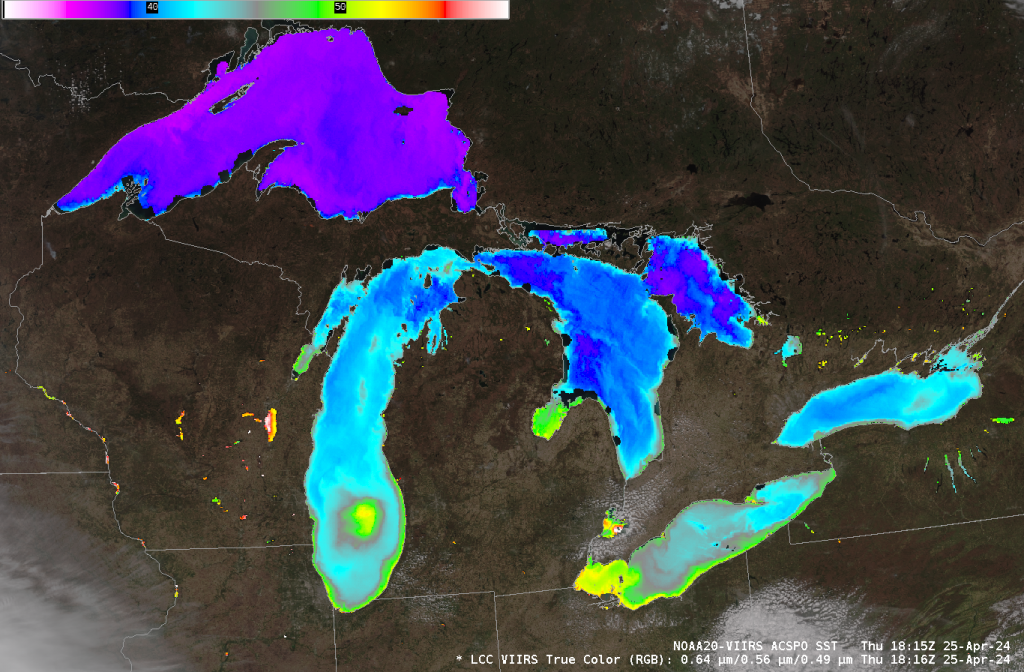
AWIPS-ready JPSS Tiles are created from data downloaded at the Direct Broadcast antenna at CIMSS (processed by CSPP software) and are available from an LDM feed at CIMSS. Data are also available as imagery at this ftp site, and here.
Now, before someone emails me and says “Hey, that warm eddy is solar reflection!” I will tell you it is not — as you don’t see glint in the True Color, and the I04 imagery doesn’t show warmth there either! The GOES-16 Land Surface Temperature does show a warm eddy moving westward across the Lake however, at fairly high speed! That earns this post the “What the heck is this?” tag!
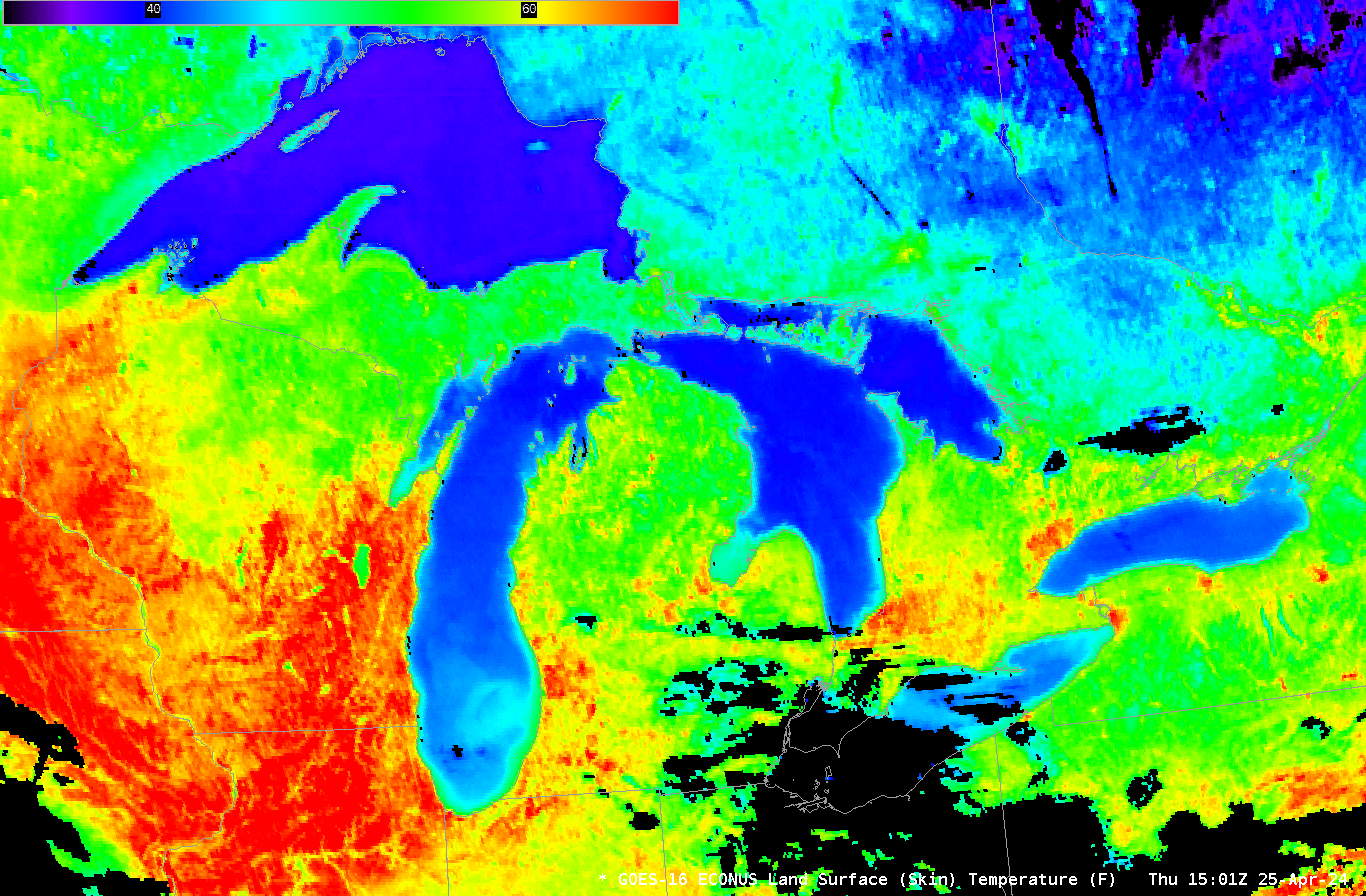
____________________
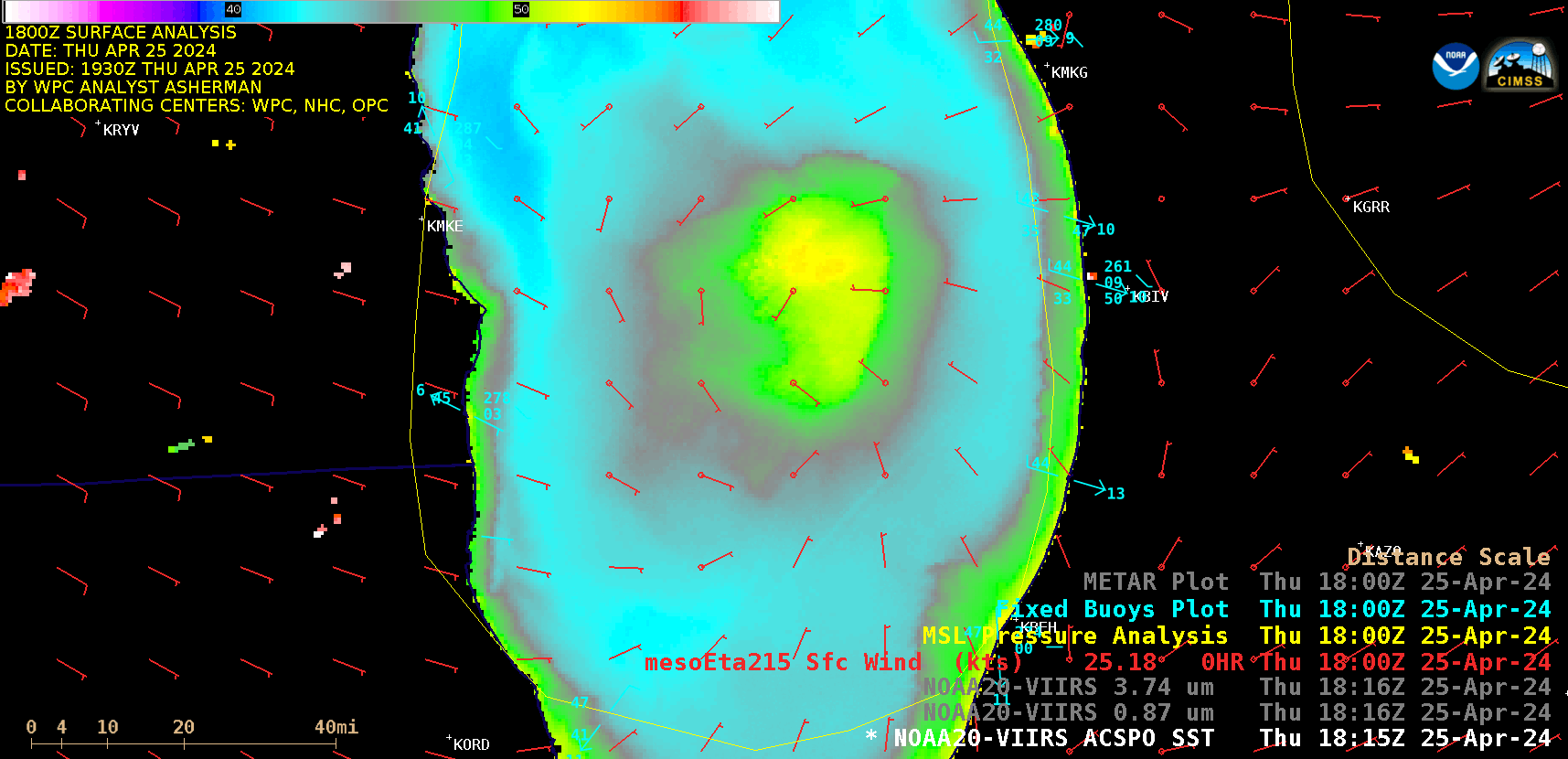
NOAA-20 VIIRS Sea Surface Temperature and Near-Infrared Vegetation (0.86 µm) images at 1816 UTC, with plots of 1800 UTC mesoEta215 model Surface Wind barbs in red, Mean Sea Level Pressure isobars in yellow and Fixed Buoy Plots in cyan (courtesy Scott Bachmeier, CIMSS) [click to enlarge]
“But wait!”, some long-time readers of this blog might be thinking: haven’t we seen similar warm-water features in Lake Michigan before? Indeed we have — and it turned out that such isolated warm water features were associated with areas of very light winds — usually beneath the center of high pressure at the surface — which allowed the water surface to warm more rapidly. These areas of light winds also exhibited a darker appearance in Visible (or in this case on 25 April, Near-Infrared) imagery (above). Details of 2 similar Lake Michigan events are available in previous blog posts here and here.
Although it was about 6 hours earlier than the NOAA-20 VIIRS images, an overpass of RCM-3 provided Synthetic Aperture Radar (SAR) imagery (source) which displayed lighter wind speeds (darker shades of blue) in southern Lake Michigan (below).

RCM-3 Synthetic Aperture Radar (SAR) image at 1201 UTC [click to enlarge]
—————
Free Secure Email – Transcom Sigma
Transcom Hosting
Transcom Premium Domains
